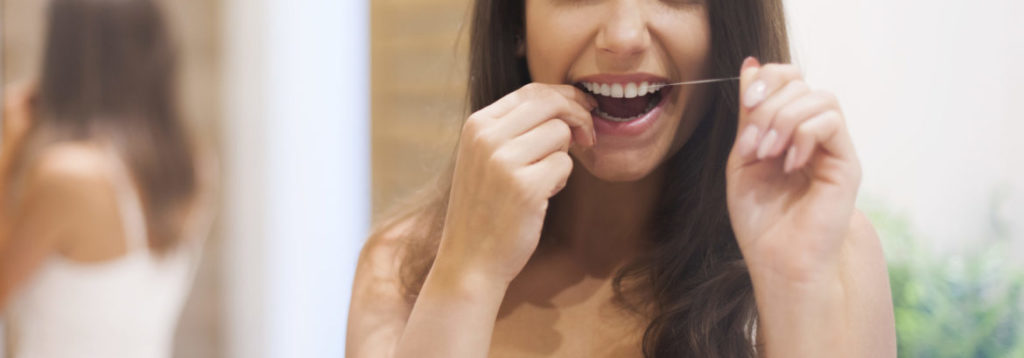At Clackamas Smiles Family Dental, bleeding gums rank as one of the common conditions Dr. Seuss sees in patients. If your gums bleed after eating, brushing, or flossing, you might be noticing the early signs of gum disease, commonly referred to as gingivitis. When allowed to progress unchecked, gingivitis can continue to develop into far more serious periodontitis, the leading cause of permanent tooth loss in adults.
Fortunately, gingivitis and bleeding gums don’t have to become a more serious problem. By practicing quality oral hygiene at home, you can prevent the progression of gum disease and restore your gums back to health.
What Causes Bleeding Gums?
The most common reason for gums to start bleeding is a buildup of plaque and tartar. These oral bacteria build up on our teeth and along the gum line. When allowed to remain in the mouth, they contribute to the development of inflammation that irritates gum tissue. When gum tissue becomes both irritated and inflamed, it leads to the development of gingivitis.
Fortunately, you can prevent plaque buildup and gum sensitivity by practicing quality oral hygiene at home.
In addition to tartar and plaque buildup, other causes of bleeding gum include:
- Brushing less than twice a day
- Using a toothbrush with hard, inflexible bristles
- Using an old toothbrush with broken, frayed bristles that can no longer effectively clean teeth
- Brushing too hard
- Not flossing enough
If seeing red in your spit causes you to feel concerned, consider trying the tips listed below to prevent gum tissue from bleeding. While these tips offer a way of treating gums that bleed as a result of gingivitis, you’ll need to continue improving your oral hygiene routine and receive treatments at Clackamas Smiles Family Dental to restore your gum tissue back to health.
Gauze
Just as with a paper cut, applying gauze and pressure to a bleeding area can help to stop the bleed.
To stop any bleeding, gently apply the gauze using slight pressure to the affected area until the bleeding has stopped. If it takes longer than a few minutes for the bleeding to stop, you should consult with Dr. Suess, especially if you have a weakened immune system or other underlying medical condition.
Ice
Apply an ice cube or small ice pack to the bleeding area or swollen gum tissue to help reduce any discomfort.
Ice packs offer a great option for helping to soothe the type of minor oral injuries that cause swelling to develop, such as bruises or scrapes. They also work well at helping to reduce any swelling and discomfort caused by gingivitis.
So you don’t give yourself any kind of frostbite, only apply the ice to the affected area for 10 minutes or less.
Mouthwash
Antibacterial mouthwashes can pull double duty when dealing with bleeding gums. Not only can mouthwash help to sterilize any cracks in the gum tissue, it can also help to eliminate plaque and tartar buildup, two conditions that lead to the development of gingivitis.
When selecting a mouthwash to use, consider purchasing a non-alcoholic brand. Mouthwashes that contain alcohol can dry out the mouth, making it easier for harmful oral bacteria to damage tooth enamel and irritate gum tissue. Saliva acts as the body’s natural defense against tartar and plaque buildup.
Salt Rinse
Rinsing with salt water can help to reduce the buildup of harmful oral bacteria, while also improving the time it takes the mouth to heal. If you want to create a drinkable salt solution at home, the American Dental Association recommends adding a ½ teaspoon of salt to 8 ounces of warm water.
Just swish the solution around in your mouth for roughly 60 seconds to clean the area, and then spit out the salt water. Repeat this process several times a day, or as frequently as recommended by Dr. Suess.
If you have gums that continue to bleed no matter what treatments you try, schedule an appointment to see Dr. Suess at Clackamas Smiles Family Dental. Gums that bleed abnormally could be a sign of a more serious underlying condition.

